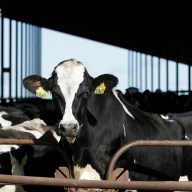“Deadliest Warrior” pits history’s greatest fighters against each other to determine who is the fiercest foe of all time. On tonight’s episode, weapons maker David Baker and the other experts test Joan of Arc — the series’ first female warrior — against William the Conqueror. Tune in tonight at 10 p.m. on Spike TV.
Baker discusses his favorite tools of the trade in the third season of ‘Deadliest Warrior.’
Weapon:
Time period it was used/people who used it: Used by the Gurkhas; Second World War
Level of difficulty to make:
Level of difficulty to wield (including best uses and downfalls):
Deadly factor (how “deadly” is it?): Extremely, in the hands of the Gurkhas. In a famous battle in the Khyber Pass, the Gurkhas fought off the Afghans and British with only these knives, as they refused to use their gunpowder charges after they learned it was dipped in pig fat.
Why it’s a favorite:
Weapon:
Time period it was used/people who used it: 1680 – 1820; This was George Washington’s inaugural sword. It’s one of the few combination swords that works well. It is a small sword, but works well in defense of heavier weapons. You have a wide section of blade near the handle where you can deflect a heavy weapon, but you can also use the thin, sharp tip of the weapon for a longer range thrust. It’s a very elegant, pretty sword.
Level of difficulty to make:
Level of difficulty to wield (including best uses and downfalls): This sword should be used by an expert swordsman — it takes a lot of study to use. It’s not a cutting sword, but a point-oriented sword. Or, a surgeon’s weapon as opposed to a butcher’s weapon.
Deadly factor (how “deadly” is it?):
Why it’s a favorite: It’s my favorite primarily because of the combination of the speed and accuracy of the weapon while still being able to defend against a heavier blade.
Weapon: Hernan Cortes’ Spanish Halberd or Albarada
Time period it was used/people who used it: It’s a pole with a concave axe blade on one side; a hook on the other and a 24-inch spike on the tip. It’s designed for multiple uses – the tip is used for holding people off and stabbing at a distance with the long point at the front; the axe edge is for cutting or hacking when you’re fighting someone with armor; the hook on the back is used to pull people from their feet or down from horseback; if you swing it at someone, then the hook on the back can be used like a war hammer. It’s elegant as far as pole arms go; though this one is made to the specifications of the early 1500s for the Spanish conquistadors.
Level of difficulty to make:
Level of difficulty to wield (including best uses and downfalls): It’s a big weapon, so that’s the major downfall – in confined spaces, you can hold someone off, but you can’t do much more than that. With more space, because it’s a longer weapon, you can reach someone a little bit farther and get to them before they get to you.
Deadly factor (how “deadly” is it?): Weapons like this have been used for hundreds of years — if it’s lasted that long, it means it’s pretty deadly and effective.
Why it’s a favorite:
















